Off-grid Solar System
Advance Solar
Explore Best Value Solar & Battery Solutions in Melbourne & Victoria
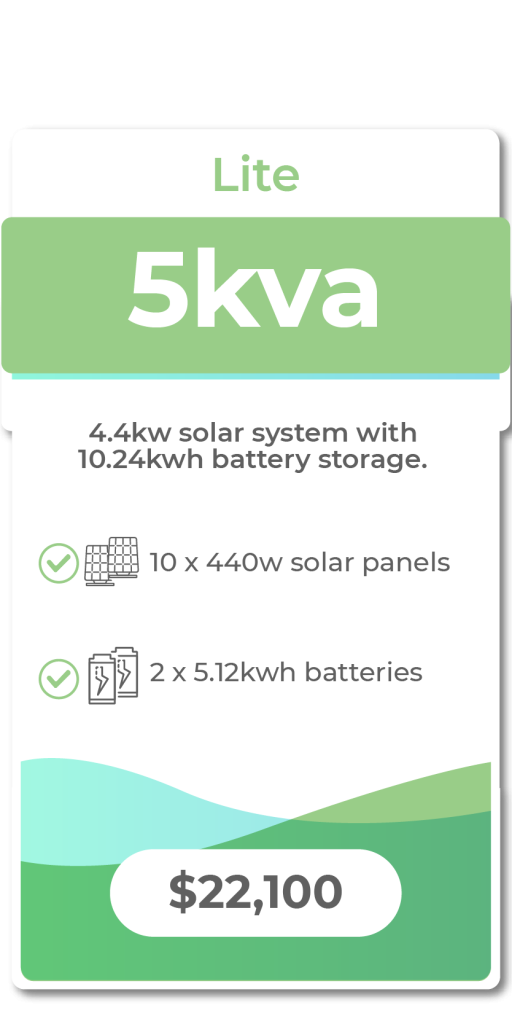
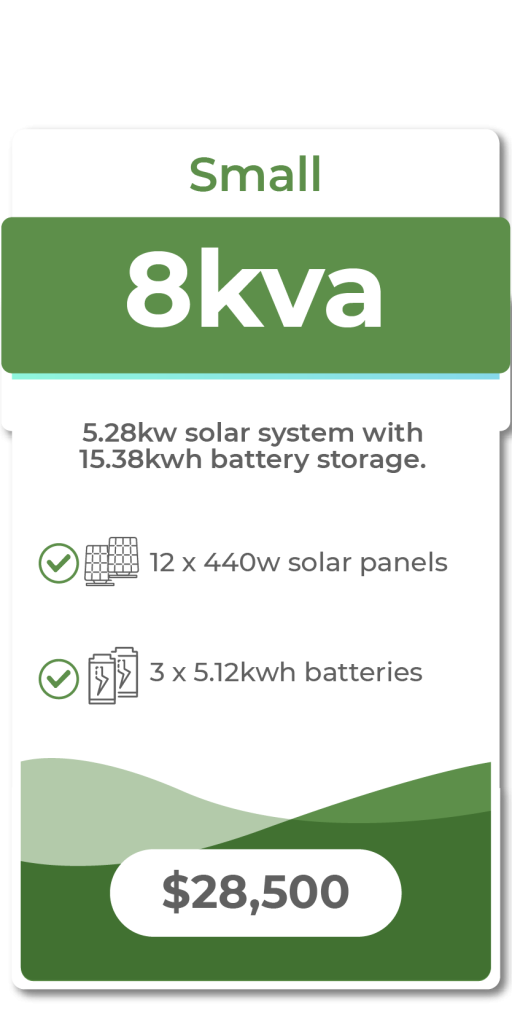
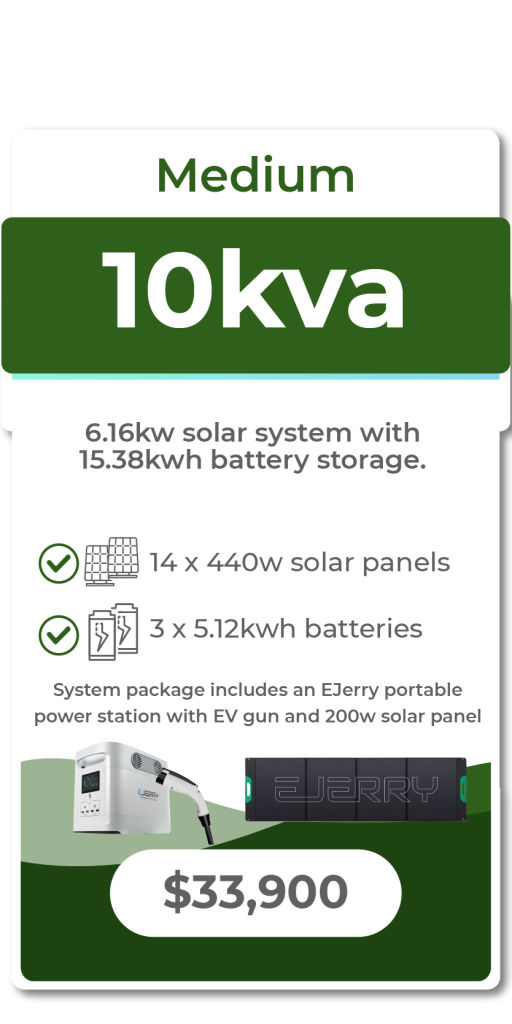
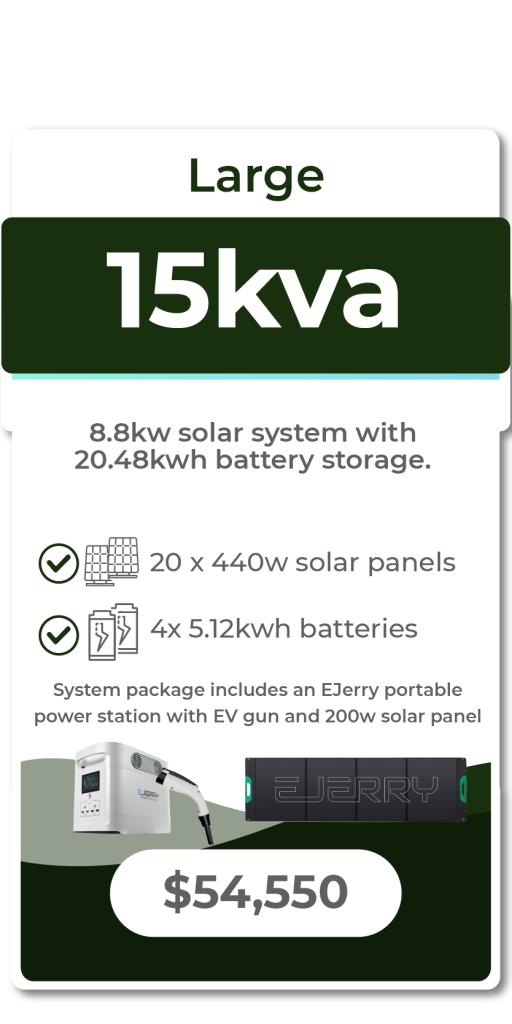
Inclusive in package
- Pricing is based on metro locations.
- price includes STC federal rebates as of 2024
- main earth connection and sub mains connection to customers existing switchboard.
- electrical inspector and electrical safety certificate.
- solar array on same building and structure as of that where skybox system is located.
Price Exclusives – additional costs
- Regional installations
- Underground cabling
- Lifting or access equipment hire.
- Generator connections/installations
- Additional general electrical works.
- Ac coupled of existing solar systems to new skybox
Skybox - Your own power grid
SkyBox gives everyone freedom and independence from the power grid.
Acting as a central ‘brain,’ the SkyBox manages incoming power from your solar, wind, or hydro generators. Balancing these power sources and storing excess energy in the internal batteries, SkyBox creates a reliable off-grid electricity supply.
Since any electrician can install it, you can save thousands compared to installing an off grid solar system, through an off grid installer or provider.
Reduce the cost of going off-grid and generate your own energy today.
Learn more about the SkyBox and how it can benefit you by downloading the free brochure.
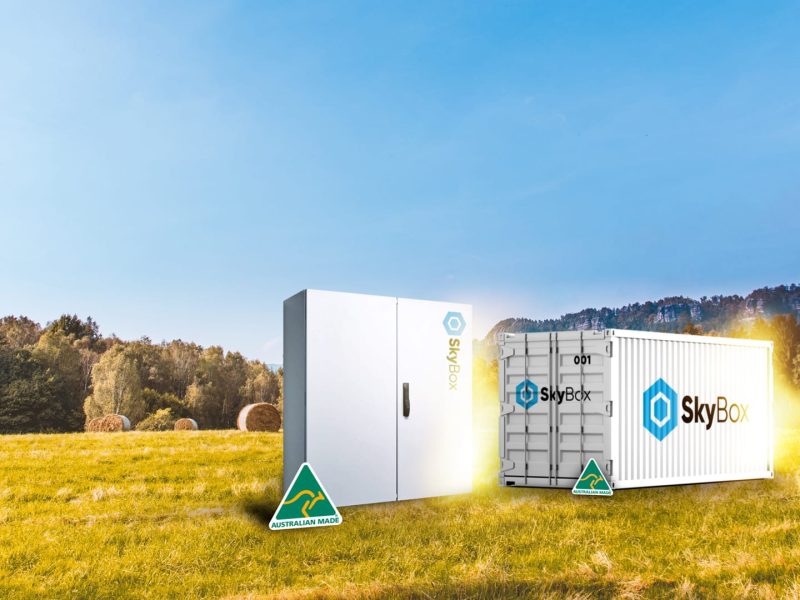
Why choose Advance Solar for Off-Grid Solar Installation?

15+ Years Experience
Our head technician has been installing solar system for over 15 years. We have completed solar projects for a wide range of clients, including councils, businesses, hospitals, warehouses, and residential properties. With decades of collective experience, we bring a wealth of knowledge and a track record of excellence to every project.

Best Solar Deals
Top-quality solar installations and unbeatable offers. We work closely with suppliers to bring you the most cost-effective standalone solar packages. Enjoy the best prices + Victorian Government Rebates.

Unmatched Performance
We keep our eyes on your solar investment, providing comprehensive maintenance services tailored for businesses, corporate clients, and government entities. This proactive approach guarantees that your solar solution operates at peak efficiency, maximising your financial returns and environmental contributions.
Partnerships & Professional Accreditation










What is Off-Grid Solar System?
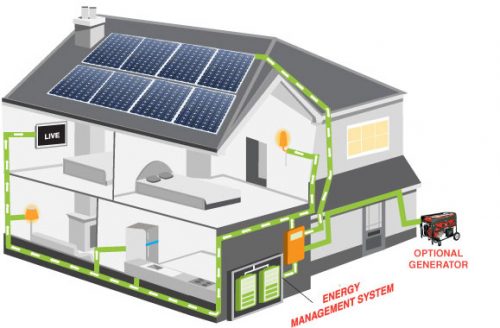
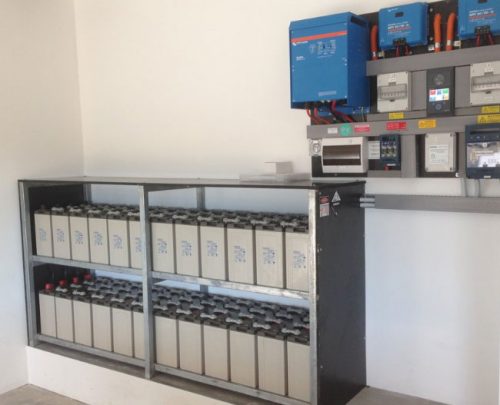
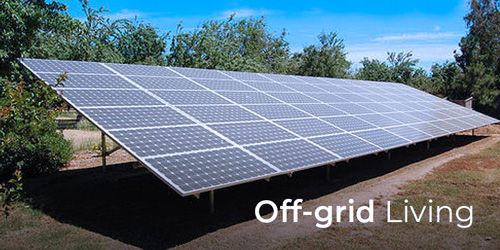
Stand-alone power systems (SAPS) are independent electrical systems that are not connected to the electricity grid network. These systems are capable of a wide range of applications delivering reliable electricity for your small or large home, business and even farms.
SAPS work by energy being produced by a renewable source that being solar panels, wind turbines or even hydro system which all produce DC power, this energy is converted to AC by an inverter where it is then sent to the switchboard and out to the consumers loads or that are being used at that time.
All excess surplus energy is sent to the battery’s to be recharged until the batteries are full.
When the renewable production source stops producing energy the battery bank will then send electricity to your loads/appliances.
If the battery bank levels get to low the inverter system will automatically turn over the diesel generator to power the loads/appliances and recharge the battery storage system.
There is a lot to consider when choosing to go off grid, the load profile and maximum demand need to be calculated correctly to gives us an idea of the storage you require and solar panel size also which producing and system configuration. There is two main types of configuration AC coupled and DC coupled which have their advantage’s and disadvantage’s so having the right configuration for your lifestyle and setup if crucial to the efficiency and life expectancy of your SAPS.
Contact us today to speak to our qualified accredited stand-alone system electricians.
You might want to know...
Determining the size of an off-grid solar system for your property involves several factors that are unique to your situation. Here are some key considerations to help you determine the appropriate size:
- Energy Usage: Start by assessing your average daily energy usage. Look at your utility bills to understand your monthly kWh consumption. This will give you an idea of how much electricity you need to generate with your solar system.
- Location: The amount of sunlight your property receives is crucial. Solar panels generate different amounts of electricity depending on geographic location, orientation, and shading from nearby trees or buildings. Use tools like the National Renewable Energy Laboratory’s PVWatts Calculator to estimate solar potential based on your location.
- System Efficiency: Solar panels are rated by their maximum output in watts (W). However, this doesn’t mean they’ll consistently produce that amount of power. Factors like temperature, shading, and panel orientation affect real-world efficiency. Typically, you’ll want to factor in a conservative efficiency estimate when sizing your system.
- Battery Storage: If you’re going off-grid, you’ll likely need a battery storage system to store excess energy generated during the day for use at night or during cloudy days. The size of your battery bank will depend on your energy usage patterns and how many days of autonomy you want (i.e., how many days you want to be able to operate solely on battery power without recharging).
- Backup Generator: In some cases, especially in regions with extended periods of low sunlight, having a backup generator can provide peace of mind. The size of the generator would depend on your energy needs and how often you expect to rely on it.
- Budget: Of course, your budget will also play a significant role. Larger systems with more panels and storage capacity will cost more upfront but may provide greater long-term savings.
Maintaining an off-grid solar system is essential to ensure its efficiency and longevity. Here’s a comprehensive guide on how to maintain it:
- Regular Cleaning: Keep the solar panels clean from dust, dirt, leaves, and other debris. Depending on your location, you may need to clean them more frequently. Use a soft brush, sponge, or cloth with mild detergent and water to clean the surface. Avoid using abrasive materials that could scratch the panels.
- Inspect for Damage: Regularly inspect the solar panels for any signs of damage such as cracks, scratches, or corrosion. If you notice any issues, address them promptly to prevent further damage.
- Check Wiring and Connections: Inspect the wiring and connections to ensure they are secure and free from corrosion. Loose connections or damaged wiring can reduce the efficiency of your system or even cause safety hazards.
- Monitor Battery Levels: If your off-grid solar system includes batteries, monitor their levels regularly. Check the electrolyte levels in flooded lead-acid batteries and ensure they are topped up with distilled water if necessary. For sealed batteries, monitor their charge levels using a battery monitor or charge controller.
- Monitor Charge Controller: If your system includes a charge controller, monitor it regularly for proper operation. Ensure that it is charging the batteries correctly and protecting them from overcharging or excessive discharge.
- Check Inverter Performance: The inverter converts DC power from the solar panels and batteries into AC power for use in your home. Monitor the inverter regularly to ensure it is functioning properly and efficiently. Check for any error codes or unusual noises that may indicate a problem.
- Trim Surrounding Vegetation: Keep trees, branches, and other vegetation trimmed to prevent shading of the solar panels, which can reduce their efficiency.
- Protect Against Weather: Ensure that your off-grid solar system is properly protected against extreme weather conditions such as storms, high winds, and snow loads. Secure panels and other components to withstand these conditions.
- Perform System Checks: Periodically perform comprehensive system checks to ensure that all components are functioning properly. This includes testing the voltage and output of the solar panels, batteries, charge controller, and inverter.
- Keep Records: Keep detailed records of maintenance activities, system performance, and any issues encountered. This will help you track the performance of your off-grid solar system over time and identify any trends or recurring problems.
By following these maintenance tips, you can ensure that your off-grid solar system operates efficiently and reliably for years to come. Regular maintenance not only maximizes the performance of your system but also helps to prolong its lifespan.
Yes, it is possible to upgrade an existing grid-tied solar system to an off-grid solution, but it can be a complex process depending on the specifics of your current setup and your desired off-grid requirements. Here are the general steps you might need to take:
- Assessment: Evaluate your current solar system to determine if it can support an off-grid setup. Consider factors such as the size and capacity of your solar panels, the condition of your inverter, and whether you have battery storage already in place.
- Battery Storage: If your existing solar system does not have battery storage, you will need to install batteries to store excess energy generated during the day for use at night or during periods of low sunlight. Choose batteries that are suitable for off-grid applications, such as deep-cycle lead-acid batteries or lithium-ion batteries.
- Charge Controller: You may need to upgrade your charge controller to one that is compatible with off-grid systems. Off-grid charge controllers typically have additional features such as battery voltage regulation and low-voltage disconnect to protect the batteries from overcharging or excessive discharge.
- Inverter: Depending on your existing inverter, you may need to replace it with an off-grid inverter that can convert DC power from the solar panels and batteries into AC power for use in your home. Off-grid inverters also typically have built-in battery chargers and other features specific to off-grid systems.
- System Sizing: Ensure that your solar panels, battery storage, and other components are properly sized to meet your off-grid energy needs. Consider factors such as your energy consumption patterns, the size of your home, and the available sunlight in your area.
- Electrical Wiring: You may need to make changes to your electrical wiring to accommodate the new off-grid components and configuration. This may include installing new wiring for the batteries, charge controller, and inverter, as well as making adjustments to your existing wiring to integrate them into the off-grid system.
- Permits and Regulations: Check local building codes, regulations, and permit requirements for installing or modifying an off-grid solar system. You may need to obtain permits and adhere to specific guidelines for off-grid installations in your area.
- Professional Installation: It’s recommended to hire a qualified solar installer or electrician with experience in off-grid systems to perform the upgrade. They can ensure that the installation is done safely, correctly, and in compliance with local regulations.
- Testing and Commissioning: Once the upgrade is complete, thoroughly test the system to ensure that all components are functioning properly and efficiently. Monitor its performance over time and make any necessary adjustments or optimizations.
Upgrading to an off-grid solar system can provide greater energy independence and resilience, especially in remote or rural areas where grid connectivity may be unreliable or unavailable. However, it’s important to carefully plan and execute the upgrade to ensure that it meets your energy needs and operates effectively.
Small-scale Renewable Energy Scheme (SRES): The Small-scale Renewable Energy Scheme provided financial incentives in the form of Small-scale Technology Certificates (STCs) for the installation of solar PV systems. These certificates could be traded or sold to help offset the upfront cost of the system. This scheme applied to both grid-connected and off-grid solar installations.
These can only be claimed if the solar installer is accredited and has their off grid endorsement.
Advance solar offer a 10 year installation warranty also can assist with any product warranty that may arise.
Skybox comes with a 10 year which covers all products – can refer to the link for more information
https://skyenergy.com.au/wp-content/uploads/2024/02/SkyBox-Warranty-Doc-June-2023.pdf
Completely eliminating your electricity bill with a standalone solar system in Melbourne is possible, but it depends on various factors such as the size of the solar system, your energy consumption, and your lifestyle. Here are some key considerations:
- System Size: The size of your solar system will directly impact its ability to generate enough electricity to meet your household’s needs. A larger solar system will produce more electricity, increasing your chances of offsetting your electricity bill entirely.
- Energy Consumption: To eliminate your electricity bill, you’ll need to generate enough solar energy to cover your household’s energy consumption. This requires accurately estimating your energy usage and ensuring that your solar system is appropriately sized to meet those needs.
- Efficiency and Orientation: The efficiency of your solar panels and the orientation of your solar array can affect the amount of energy your system generates. Ideally, solar panels should be installed facing north in Melbourne to capture the maximum amount of sunlight throughout the day.
- Battery Storage: If you’re aiming to completely eliminate your electricity bill, you may want to consider incorporating battery storage into your standalone solar system. Batteries allow you to store excess solar energy generated during the day for use during periods of low sunlight or at night, reducing your reliance on grid electricity.
- Energy Efficiency: Improving the energy efficiency of your home can help reduce your overall energy consumption, making it easier to offset your electricity bill with solar power. Simple measures such as using energy-efficient appliances, sealing drafts, and improving insulation can all contribute to lower energy usage.
- Electricity Tariffs: Understanding your electricity tariffs and rates is essential for accurately assessing the financial benefits of a standalone solar system. Some electricity retailers offer favorable feed-in tariffs for excess solar energy exported to the grid, which can further offset your electricity costs.
- Government Incentives: Take advantage of any available government incentives or rebates for solar installations, such as the Solar Homes Program in Victoria, which offers rebates for eligible solar PV installations.
By carefully considering these factors and working with a reputable solar installer, you can design a standalone solar system that has the potential to eliminate or significantly reduce your electricity bill in Melbourne. However, it’s important to conduct thorough research and analysis to ensure that your solar system is appropriately sized and configured to meet your specific energy needs and goals.
